LEARN / ARTICLE
How Indoor Pollution Impacts Our Children in Schools
This post is from a series we started publishing recently on the impact of air pollution on our daily lives. If you haven’t read the previous posts, check them out here:
- Our Buildings Are Broken
- How pollution impacts performance at the office
- How Much Pollution Gets Inside Our Offices?
- Clean Air at the Offices: Just a Benefit or Should It be a Standard?
A Quick Review of Air Quality Data Readings
If you’re new to the air quality topics, we’ll quickly review some of the numbers and colors you will see in this article.
Nafas measures concentrations of PM2.5 in the air, which are measured in µg/m3. It means that one cubic meter of air contains one microgram of pollutant. The World Health Organization yearly recommended guideline of PM2.5 exposure for humans is 5 µg/m3. For reference, Jakarta’s average in July 2023 was 47 µg/m3.
What do the colors mean? Nafas references the US EPA scale for healthy air quality as it is one of the most stringent but also recognized around the world. You can see how the US EPA scale compares to the Indonesian ISPU scale and the Chinese scale below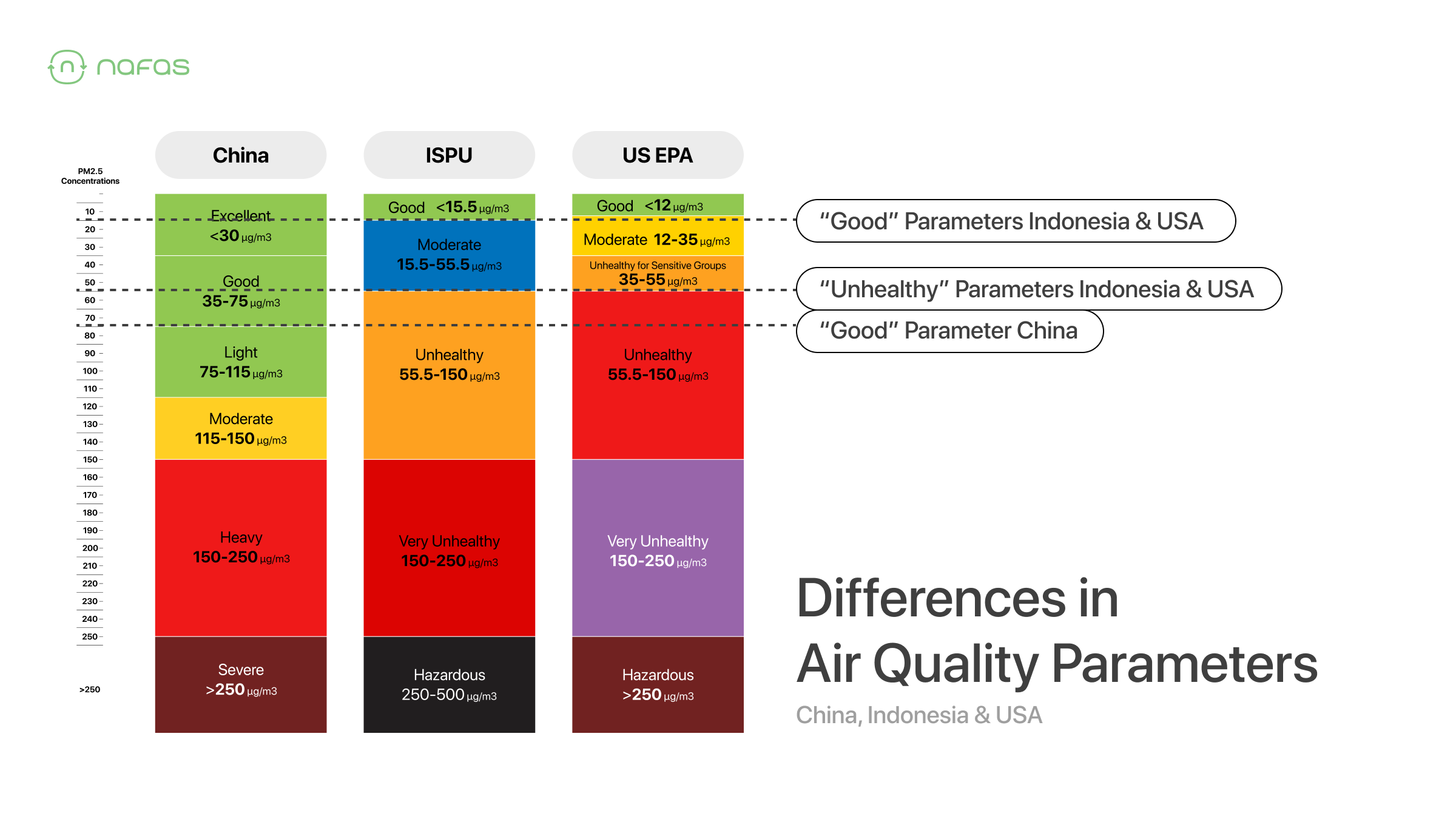
Since you now know how to measure it, to get a better idea of how air pollution impacts our performance in the office let’s first take a look at how it impacts our bodies.
Understanding PM2.5 and its Inflammatory Effects
PM2.5 refers to fine particulate matter with a diameter of 2.5 microns or less. These tiny particles are commonly associated with burning activities, such as the emissions from vehicles, power plants, and even the open waste burning in our neighbourhood. When inhaled, PM2.5 particles can penetrate deep into the lungs and even enter the bloodstream, causing systemic inflammation.
This inflammatory response is triggered by the body's immune system as it recognises the foreign particles and releases pro-inflammatory mediators to combat them. Prolonged exposure to PM2.5 can lead to chronic inflammation, which has been linked to various health problems, including respiratory and cardiovascular diseases.
Many studies have found that PM2.5 has significant health impact on children, in particular on asthma-related and emergency visit or hospitalization rate.
The risk of asthma attack for children increased by 9%
A study published on Kosin Medical Journal conducted by researchers in South Korea and Japan examined the short-term effect of PM2.5 on children. Researchers found that the risk of asthma attacks increased by 9% when the concentration of PM2.5 on a day prior to asthma attack days rose by 10 μg/㎥ from the baseline of 15 μg/㎥. (Lee et al., 2018)
Now let’s take a look at some indoor air quality data from Mighty Minds Preschool Hang Tuah during school hours.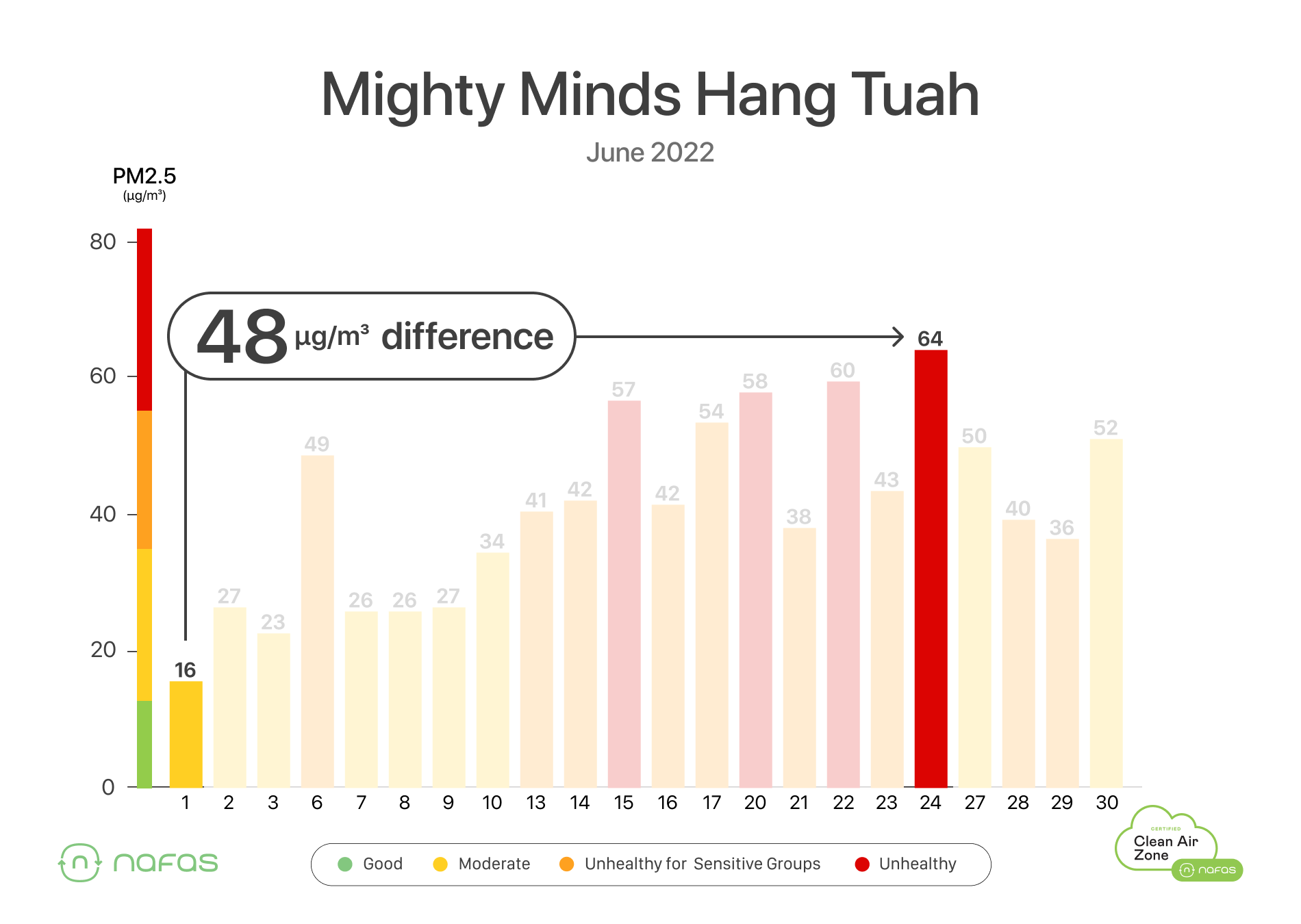
At the lowest point, the PM2.5 level during school time is 16 µg/m3 in June 2023. However, towards the end of the month, we see daily averages up to 64 µg/m3, which is an increase of 48 µg/m3.
Children who continue studying in this level of indoor pollution, the probability they are getting asthma attack is 9%. The data further highlights how the air pollution become a threat to our children’s health, with the baseline of PM2.5 is as “low” as 15 µg/m3.
Let’s take a look at the air quality data from Mighty Minds Preschool and an international school in North Jakarta to visualize what Kosin Medical Journal research would look like.
The first is Mighty Minds Preschool in their Hang Tuah campus, Jakarta. This time, we’re looking at data from July 2022 and there’s a big problem: the air quality. As you can see above, the indoor pollution reached 67 µg/m3 on school day! That’s high above the recommended PM2.5 level.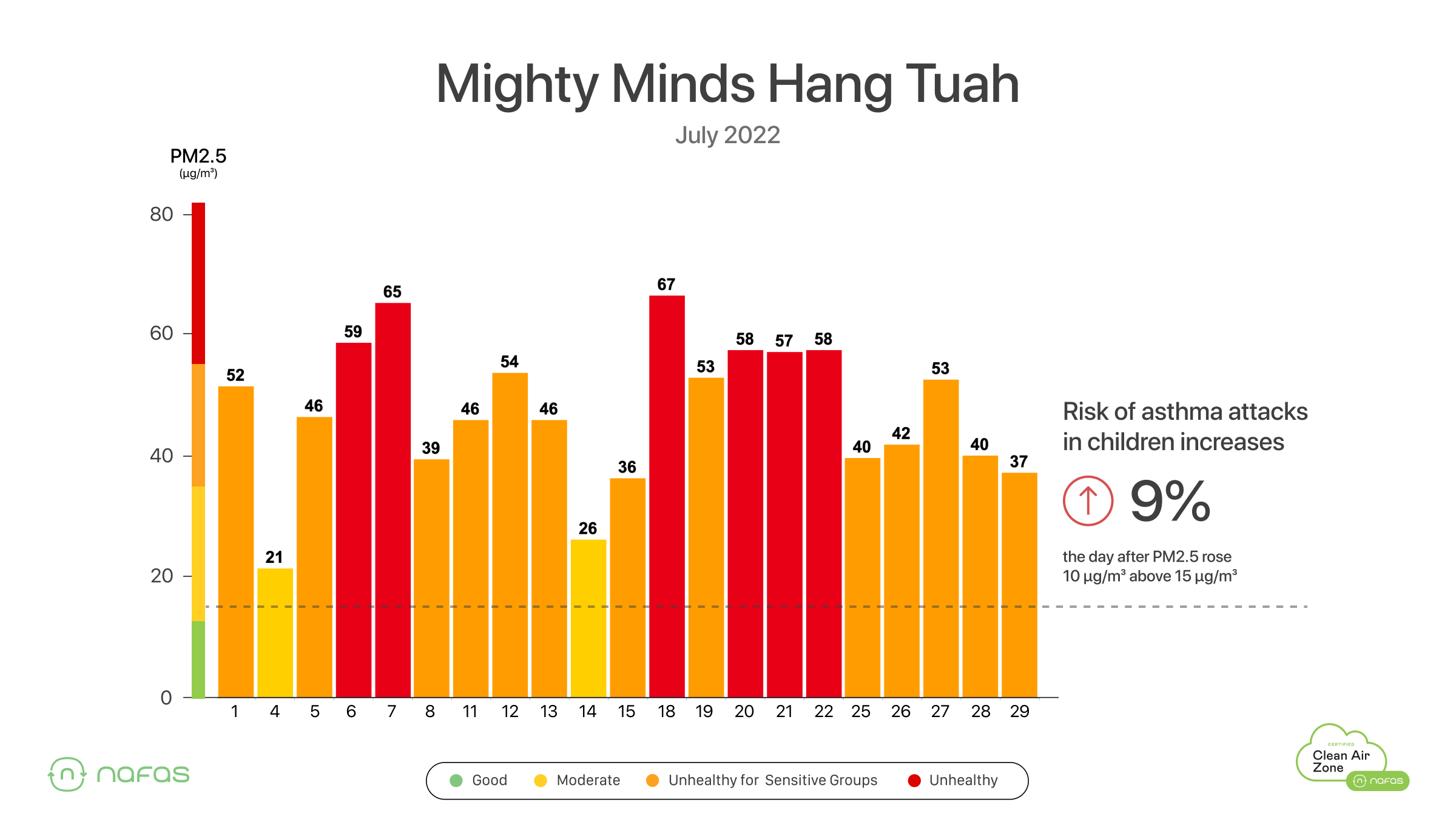
Similar thing happened in an international school in North Jakarta. The indoor air quality during school hours also far exceeds the threshold from the study!
Now let’s see another data from Mighty Minds on a different month:
During school days, even on a different month, we can see clearly that the indoor air quality inside the Mighty Minds’ could potentially increase the risk of asthma attack on children.
So, what should air quality look like inside the classrooms?
What indoor air quality at the school should look like?
The research published in Kosin Medical Journal highlighted an increased risk of asthma attack in children above PM2.5 levels of 15 µg/m3, and coincidentally, this is the same level that’s considered “Good” in the US EPA and ISPU scales.
In order to achieve this in cities where pollution is high - like Jabodetabek, Bandung, or Surabaya, school buildings need to implement enhanced filtration strategies.
That’s why Nafas has created a subscription service called Clean Air Zones - to bring your business or your building healthy air quality without having to think about it. Through years of development, Nafas has designed an ecosystem that helps companies measure their air pollution levels in their offices, fix the problem, receive a certification and submit as part of their ESG reporting on platforms such as GRI, MSCI, Sustainlytics, Moody’s and many others.
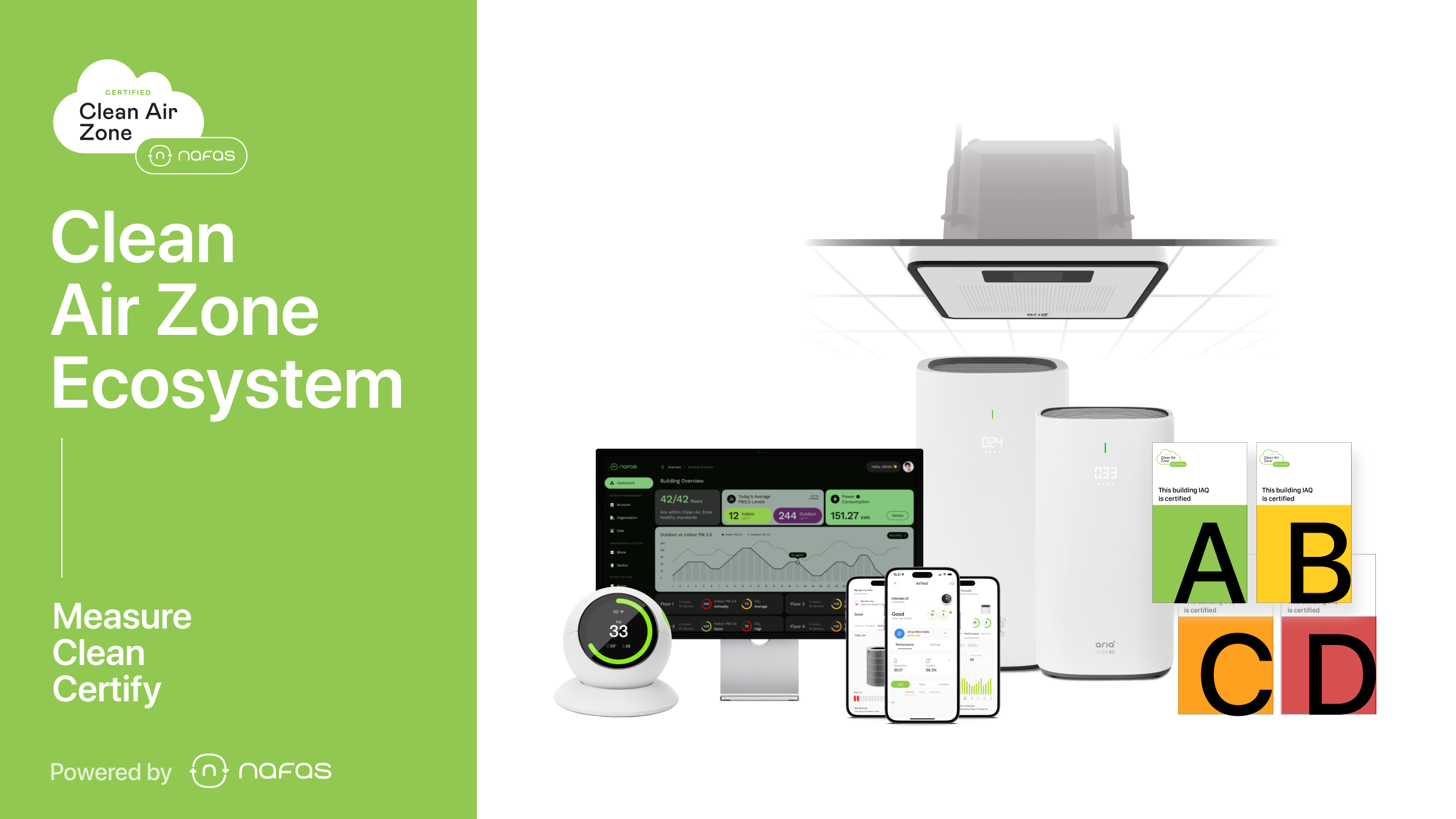
Becoming a Clean Air Zone takes 3 easy steps:
1. Nafas conducts a diagnostic and each location receives an AirScore
2. Based on the AirScore, Nafas provides a plan of action & subscription proposal
3. Nafas installs automated healthy air ecosystem, performs calibrations and makes the data available on a personalized dashboard.
And the best part?
We do everything for you.
Want to see what the results look like? Below is the data from inside the Mighty Minds classrooms which have been turned into Clean Air Zones.
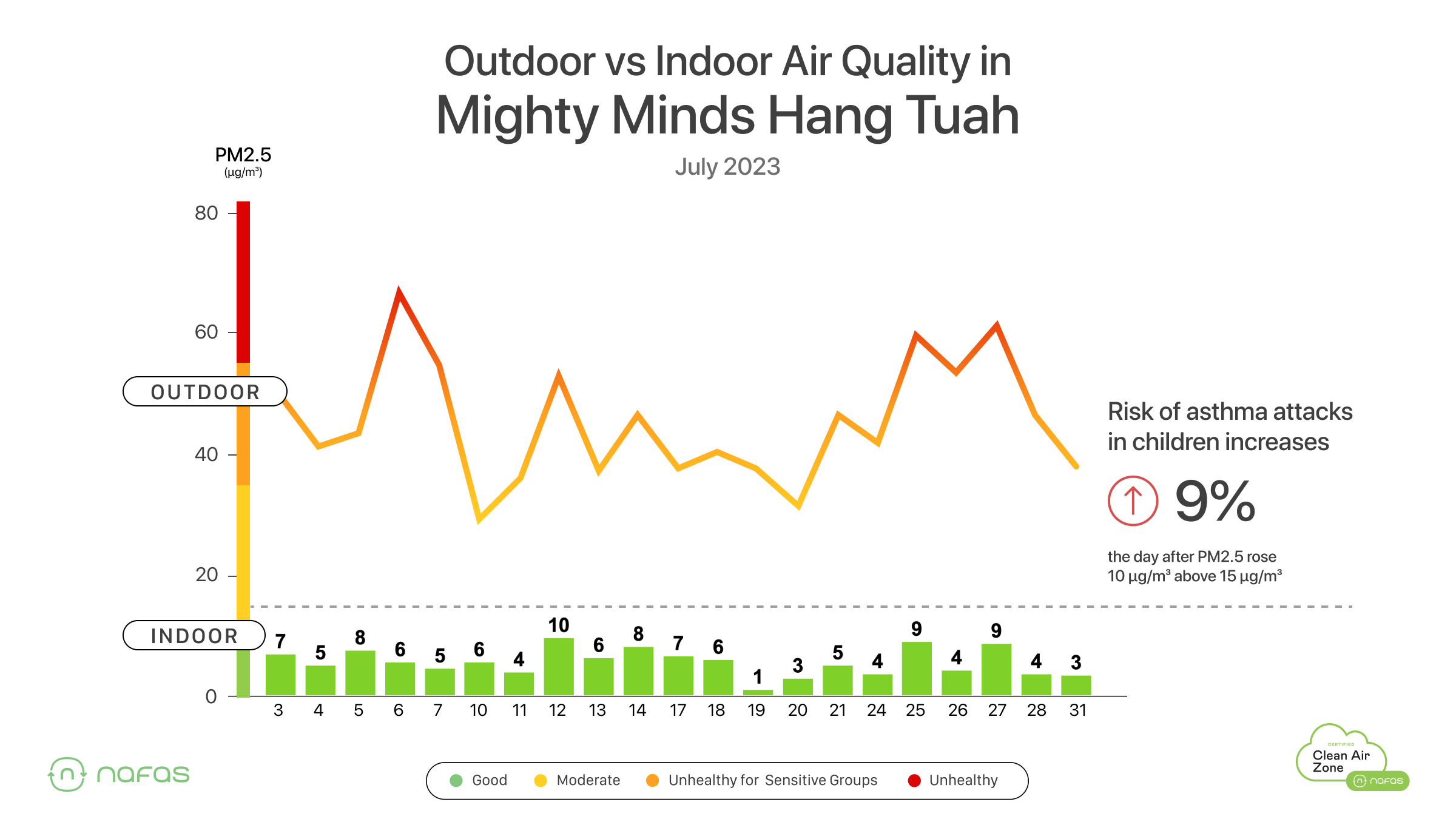
Turn Your School Into A Clean Air Zone
Nafas has worked with Mighty Minds Preschool in Menteng, Kemang, and Hang Tuah to measure the air pollution levels indoors and to convert their classrooms into Clean Air Zones. Mighty Minds Preschool is the first school in Indonesia that become a Clean Air Zone and has implemented clean air policy in the school activities. This means, the school will cancel outdoor activities when the outdoor pollution level is high.
To learn more about Clean Air Zones please email us at [email protected] or click the button bellow to sign up for a free AirScore diagnostic!